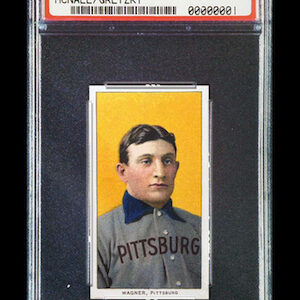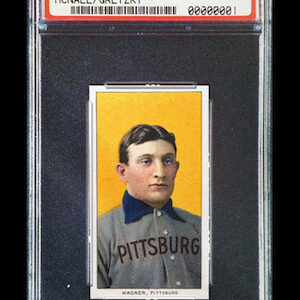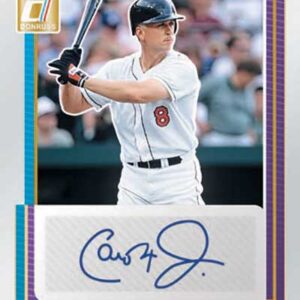In the tradition of sporting evolutions that leave us reeling like plot twists in a mystery novel, baseball has ushered in a new era with its latest innovation: the “torpedo” bat. As athletes swing for the fences with customized bats that seem to have been forged in the workshops of mythical gods, the game—and the card collecting market—is witnessing a seismic shift.
Baseball and affection for home runs have been intertwined for decades, dare I say, as inseparable as peanut butter and jelly. The sport has always appreciated the spectacle, the thrill, the singular moment when a baseball becomes a star briefly launched into the firmament, much to the fans’ delight and to the relief of those biding their time in the cheap seats, hoping for a keepsake to fall from the skies. But what happens when that spectacle becomes the norm? When baseballs take their leave of the field as reliably as the seventh-inning stretch? Enter torpedo bats.
Imagine being in Milwaukee, watching with disbelief as New York Yankees hitters launched not one, not two, but fifteen balls into orbit from their lumbered foes, with nine leaving the park in a single game. Who would sympathize more with pitchers than their own mothers, armed with lemonade and an infinite patience for shattered egos? The surge of home runs was a glorious symphony for fans, a nightmare concerto for pitchers heads, and a cryptic riddle for statisticians.
The buzzword among players and pundits alike has become “customization.” These torpedo bats are crafted with near-obsessive attention to each individual player’s preferred specs, lending a unique curvature and balance that transform swings into something more akin to magic than science. One could argue that bat-making has entered the realm of witchcraft, should one be prone to such poetic musings.
While baseball purists might fret about the game’s changing landscape, collectors have found the silver lining. For them, this boom in hard-hit balls isn’t just an auditory delight—it’s a veritable golden ticket. Yankees star Aaron Judge, though he has not yet cosigned to wielding the enchanted woodwork of torpedo caliber, has nonetheless seen his baseball card values rise sharply post Yankees most recent home run parade. For collectors, catching the scent of freshly barreled leather bound for the bleachers is akin to discovering a rare artifact in the midst of a common rock collection.
Meanwhile, pitchers who once heralded pitching prowess face an uncertain horizon. Last year’s National League Rookie of the Year, Paul Skenes, alongside potential future darlings of the mound like Jackson Jobe and Roki Sasaki, may face depreciating card values unless Major League Baseball adopts regulatory measures to level the playing field—though one suspects pointy sticks may be deemed less contributory to player appreciation than sparkling diagonal flight paths of batted balls.
Then enters the conversation of one Shohei Ohtani, an icon whose talents tell a dual narrative of pitching poetry and batting bang. He’s the baseball demi-god we all deserve. While Ohtani swings and pitches with near-imperceptible wonder, even he may gaze hungrily at the new torpedo bats and their promise of prodigious home run lore. Will the celestial mother of invention oblige him? No matter the outcome, Dodgers fans and collectors are licking their collective chops at the idea of more Ohtani memorabilia gaining both sentiment and value.
For pitchers, their year’s season may soon bear faint semblance to tours of gladiatorial tradition, called to duel against increases in physics-defying whacks that seem to flout the natural order of the game. Resumes may require an addition: “Unyielding patience sought in the face of relentless artillery; capacity to rebound underground, as baseball cards disappear.”
For all the drama unfolding on the diamond, collectors have found their muse in this new play. The market landscape is tilting wondrously in favor of those with keen eyes for future sluggers. The recommendation is simple: Invest in batter’s delight unless, of course, you don’t bat for rewards aligned with expedience. Which is to say, if hot on a pitcher’s trail and flirting with risk, perhaps it’s wise to peek around the corner at the miner’s pick, those bats called torpedos, and place your bets accordingly.
In a twist as sweet as a perfectly executed relay play from centerfield, the game’s hidden economy is buoyed with excitement like never before. In this illustrious sport, from dirt diamond to the collector’s vault, the story now orbiting around torpedo bats serves as both proof to baseball’s enduring magic and the newest chronicle in our pastime’s illustrious collection of tales. Off with the shadows of doubt, swing for the fences—and may fortune find its place in the collections soon to swell like the number of balls leaving the stadium.





